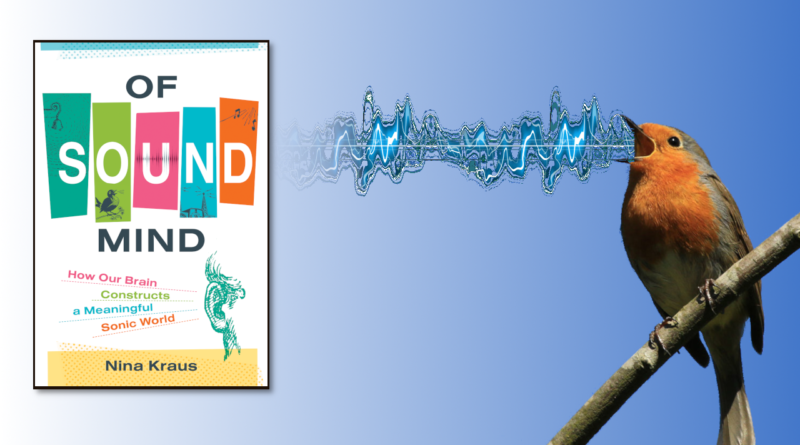Of Sound Mind, Learning and Feeling
Podcast: Play in new window | Download (0.0KB)
Subscribe: Apple Podcasts | Spotify | Android | iHeartRadio | Podchaser | Email | TuneIn | RSS | More
(October 10, 2021) I have bad news. The MacArthur people passed me over once again. That despite last week’s great show! I won’t be putting a genius grant in my checking account. At least not this year. But I don’t hold a grudge. They appreciate me for my other qualities. You know, congeniality and such. However, I can suggest a substitute. The committee should consider Nina Kraus, PhD. She’s director of something called the Brainvolts Lab at Northwestern University. She just published a new book, Of Sound Mind: How Our Brain Constructs a Meaningful Sonic World. Read this book and you will never listen the world in the same way again.

“We hear with our brains,” Kraus states simply. She explains how air movement outside the head becomes electrical impulses inside the head. Those impulses go back and forth between the brain and the ears, by the way. She posits that sounds affect the way we move, think, feel and sense the world around us. And read. And learn. One stop shopping, if you will. But hearing a sound in a different context can alter the way you recognize it. She writes,
Because the meaning of sound has changed, downstream signals have forged a new default pattern of afferent activity. Biologically speaking, learning and memory have taken place. This default system provides a runway onto which incoming sounds land, a mechanism for us to sense what is important. Exactly how my sound mind responds today depends on my life experience with sound up to now.
No “off” switch
Unless you are profoundly deaf, your hearing is never turned off. (And, having watched profoundly deaf people dance to very loud music, I could make an argument that some vibrations can substitute hearing function.) Which means that, like it or not, the sonic world around you constantly engages your brain. In a recent story for the Wall Street Journal, Kraus says that we pay a price for noise.
Noise can have a pernicious effect not only on our hearing, but on all our senses. When there was background noise, subjects in the 2004 Psychophysiology study performed worse on visual-motor tasks, such as tracking a moving target on a computer screen with a mouse pointer. Road traffic noise has even been convincingly correlated with heart disease. Indeed, chronic noise exposure increases both the levels of stress people report and the measurable level of the stress hormone cortisol.
Throughout the course of the book, Kraus explains how sound works. She also notes that being of sound mind is not the same for everyone. For instance, musicians and athletes process sound differently. So do people who are bilingual or who have suffered brain trauma. She also examines the role of hearing in dementia. It’s all part of the puzzle.
Plants and animals are of sound mind, too
And lest you think we’ve strayed too far from our usual subject matter, consider rhythm. Did you that humans aren’t the only animals that can keep a beat? We’re joined by a variety of birds, elephants and sea lions. (Sea lions?) Even plants get into the act.
A process known as buzz pollination happens when plants–including egg-plants, blueberries and cranberries–release their pollen only when certain bees buzz at the correct frequency, somewhere in the 200 to 400Hz range. This prevents the “wrong” kind of insects–those without fuzzy bodies tailor-made for spreading the pollen around–from getting to the pollen.
Dr. Kruas joins us on today’s show. I’m pleased to report I’m pulling out all of the audio/visual stops. You’ll hear and see some pretty wonderful clips. You don’t want to miss this show. Seriously. And tell a friend.

